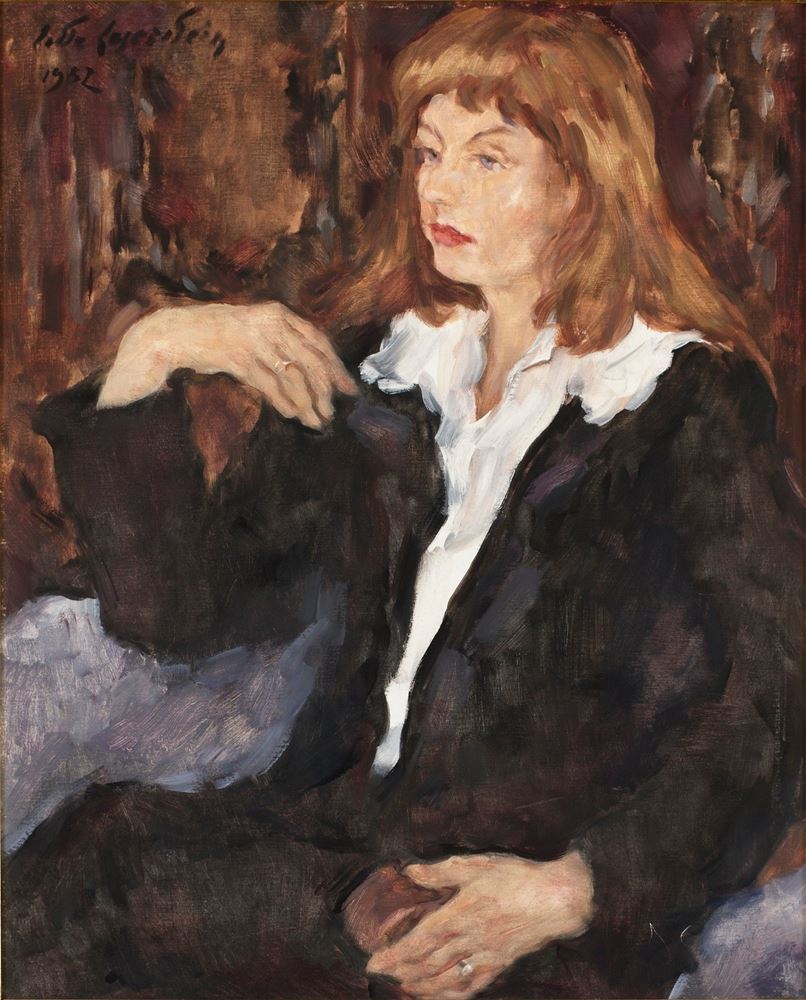In the panorama of 20th-century art, there emerge figures who have carved out their artistic identity not just with a brush, but also through the strength of their vision. One of these often overlooked yet extraordinarily influential figures is Lotte Laserstein. A German painter born in 1898 and active primarily between the two World Wars, Laserstein has left an indelible mark on figurative art and the expression of a new femininity in the paintings of her time.
Born in Preußisch Holland, then part of the German Empire (now Pasłęk, Poland), Lotte Laserstein grew up in a bourgeois Jewish family. Her passion for art led her to study at the School of Art in Berlin-Charlottenburg and later at the Academy of Fine Arts in Berlin, where she received a classical artistic education. However, she did not conform to the dominant trends of the period, such as expressionism or surrealism, but rather developed a unique style that blended realism with a sense of intimacy and introspection.
What immediately strikes in Laserstein's paintings is her ability to capture the human expression. The faces of her figures are often the focal point of the work, with a direct gaze that seems to penetrate the viewer's soul. She used a meticulous technique that allowed her to depict expressions, folds of clothing, and gestures of her subjects in detail.
Her paintings mainly portray women, usually in domestic settings or everyday scenes. These women are not passive objects of the male gaze but individuals with their own interiority and strength. Her intention to challenge gender roles and give voice to an authentic and complex femininity is evident. In Laserstein's female portraits, we find women expressing both confidence and vulnerability, women contemplating the world with critical and dreamy eyes.

The historical context in which Lotte Laserstein operated cannot be underestimated. Her career flourished in the 1920s and 1930s, a period of great political and social instability in Germany. The rise of Nazism and anti-Semitic policies had a profound impact on her life and art. Despite pressures to adhere to art accepted by the regime, Laserstein remained true to her artistic vision, which in many ways opposed Nazi ideology. In 1937, invited by her gallery owner Signe Schultz, she had to leave Nazi Germany for Stockholm, where she spent the rest of her personal and professional life in exile.
Her most famous work, "Night of 1931," is emblematic of this resistance. It depicts two elegantly dressed women seated in a nighttime café. What is striking is the absence of men in the image, contrary to the conventions of the time. This painting represents an act of defiance against the social and gender norms of the era, offering a space of freedom and reflection for women.
Despite her artistic importance and impact during her time, Lotte Laserstein fell into obscurity after World War II. Her realistic style and interest in portraits were no longer in line with the dominant trends of modern art. However, in recent decades, there has been a renewed interest in her work, and many of her pieces have been rediscovered and exhibited in major museums around the world, including currently at the Moderna Musee in Stockholm, her chosen city of refuge and residence.

Lotte Laserstein is now considered one of the greatest painters of her time, an icon of female art, and a silent yet powerful voice that challenged the limits of her era. Her women have become symbols of strength, freedom, and dignity, remaining deeply relevant today for discussions on the representation of femininity and the role of art in addressing social injustices.
In a world that often tends to forget rebellious and non-conforming voices, Lotte Laserstein shines as a beacon of light, a painter whose brush not only traced portraits but also a new narrative of the modern woman. Her legacy lives on through her works, which continue to inspire and question, inviting viewers to contemplate the power of painting in opening new perspectives on the world and the human condition.
Online editorial staff






 This site uses anonymous technical cookies to ensure navigation and third-party cookies to monitor traffic and to offer additional services such as viewing videos or messaging systems. Without third-party cookies some pages may not work properly. Third-party cookies can track your activity and will only be installed by clicking on the "Accept all cookies" button. You can change your selection at any time by clicking on the "Cookie" link on each page at the bottom left. By clicking on one of the two buttons you declare that you have read the privacy policy and to accept the conditions.
This site uses anonymous technical cookies to ensure navigation and third-party cookies to monitor traffic and to offer additional services such as viewing videos or messaging systems. Without third-party cookies some pages may not work properly. Third-party cookies can track your activity and will only be installed by clicking on the "Accept all cookies" button. You can change your selection at any time by clicking on the "Cookie" link on each page at the bottom left. By clicking on one of the two buttons you declare that you have read the privacy policy and to accept the conditions.